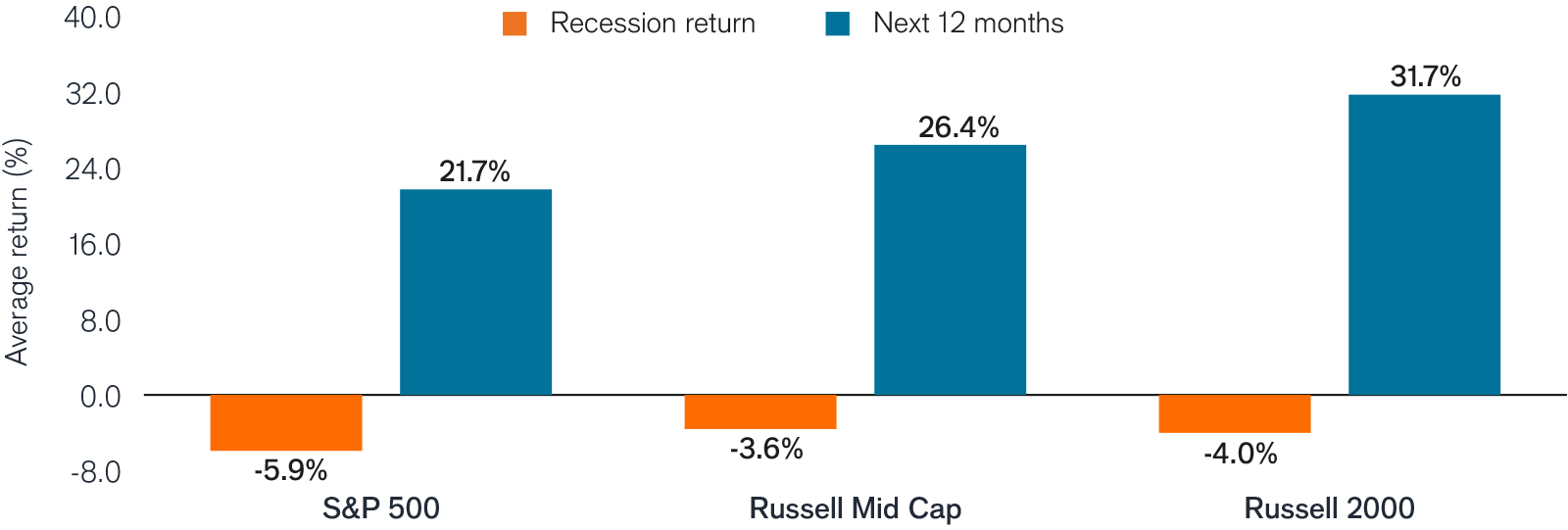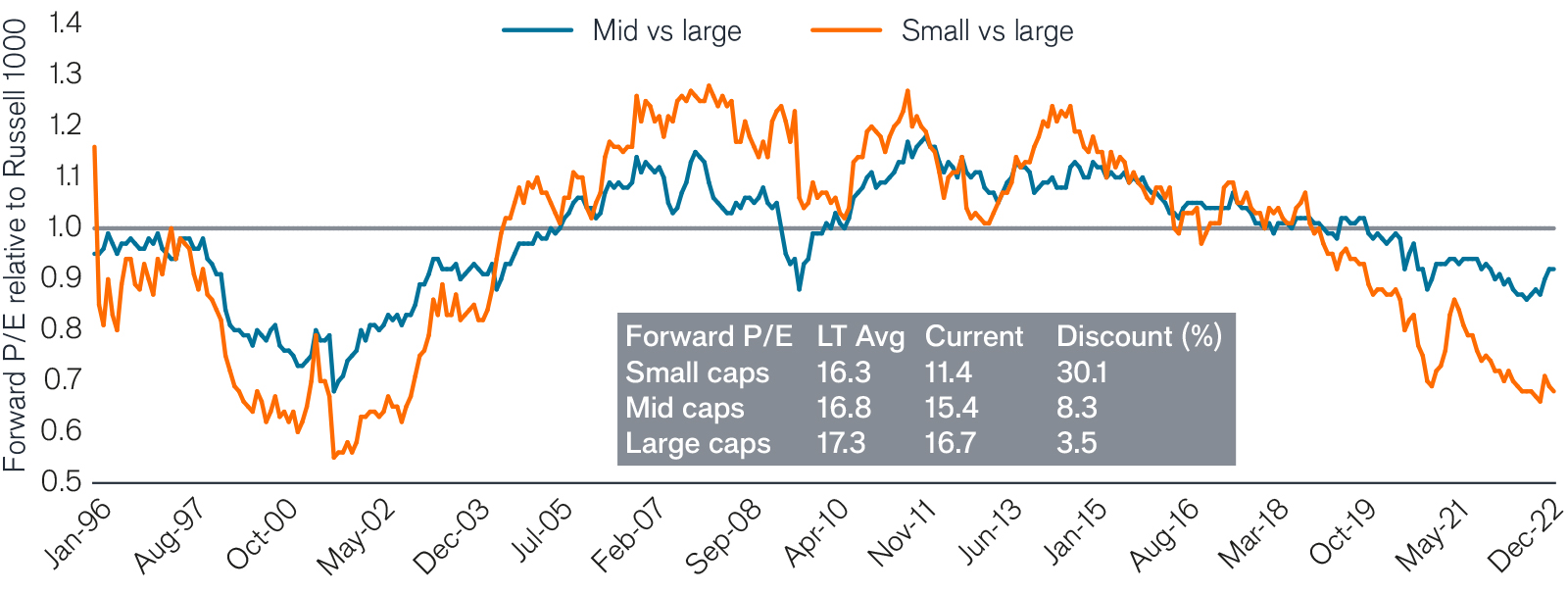Subscribe
Sign up for timely perspectives delivered to your inbox.
The Portfolio Construction and Strategy team discusses why they believe, by taking an active approach that focuses on profitable companies, the small- and mid-cap space may present opportunities in the current economic environment.

This article is part of the latest Trends and Opportunities report, which outlines key themes for the next stage of this market cycle and their nuanced implications across global asset classes.
U.S. small- and mid-cap companies are typically levered to the economic cycle and historically outperform large caps during the early stages of recoveries.
| Value | Core | Growth | |
|---|---|---|---|
|
Large
|
-7.5% | -19.1% | -29.1% |
|
Mid
|
-12.0% | -17.3% | -26.7% |
|
Small
|
-14.5% | -20.4% | -26.4% |
Source: Morningstar. Style/size in the table based on Russell indices.

Source: Morningstar, National Bureau of Economic Research, U.S. Bureau of Labor Statistics, Bureau of Economic Analysis. Recession return based on time period from 1980 to 2022. Past performance is no guarantee of future results.

Source: FactSet. As at 31 December 2022.
1Source: Janus Henderson Investors, as at 31 December 2022.
*Values are based on Janus Henderson’s proprietary database of financial professional portfolios as at 31 December 2022.
Price-to-Earnings (P/E) Ratio measures share price compared to earnings per share for a stock or stocks in a portfolio.
Russell 1000® Index reflects the performance of U.S. large-cap equities.
Russell 2000® Index reflects the performance of U.S. small-cap equities.
Russell 2500™ Growth Index reflects the performance of U.S. small to mid-cap equities with higher price-to-book ratios and higher forecasted growth values.
Russell 3000® Index reflects the performance of broad U.S. equities.
Russell Midcap® Index reflects the performance of U.S. mid-cap equities.
S&P 500® Index reflects U.S. large-cap equity performance and represents broad U.S. equity market performance.
IMPORTANT INFORMATION
Actively managed portfolios may fail to produce the intended results. No investment strategy can ensure a profit or eliminate the risk of loss.
Growth stocks are subject to increased risk of loss and price volatility and may not realize their perceived growth potential.
Smaller capitalization securities may be less stable and more susceptible to adverse developments, and may be more volatile and less liquid than larger capitalization securities.
Value stocks can continue to be undervalued by the market for long periods of time and may not appreciate to the extent expected.